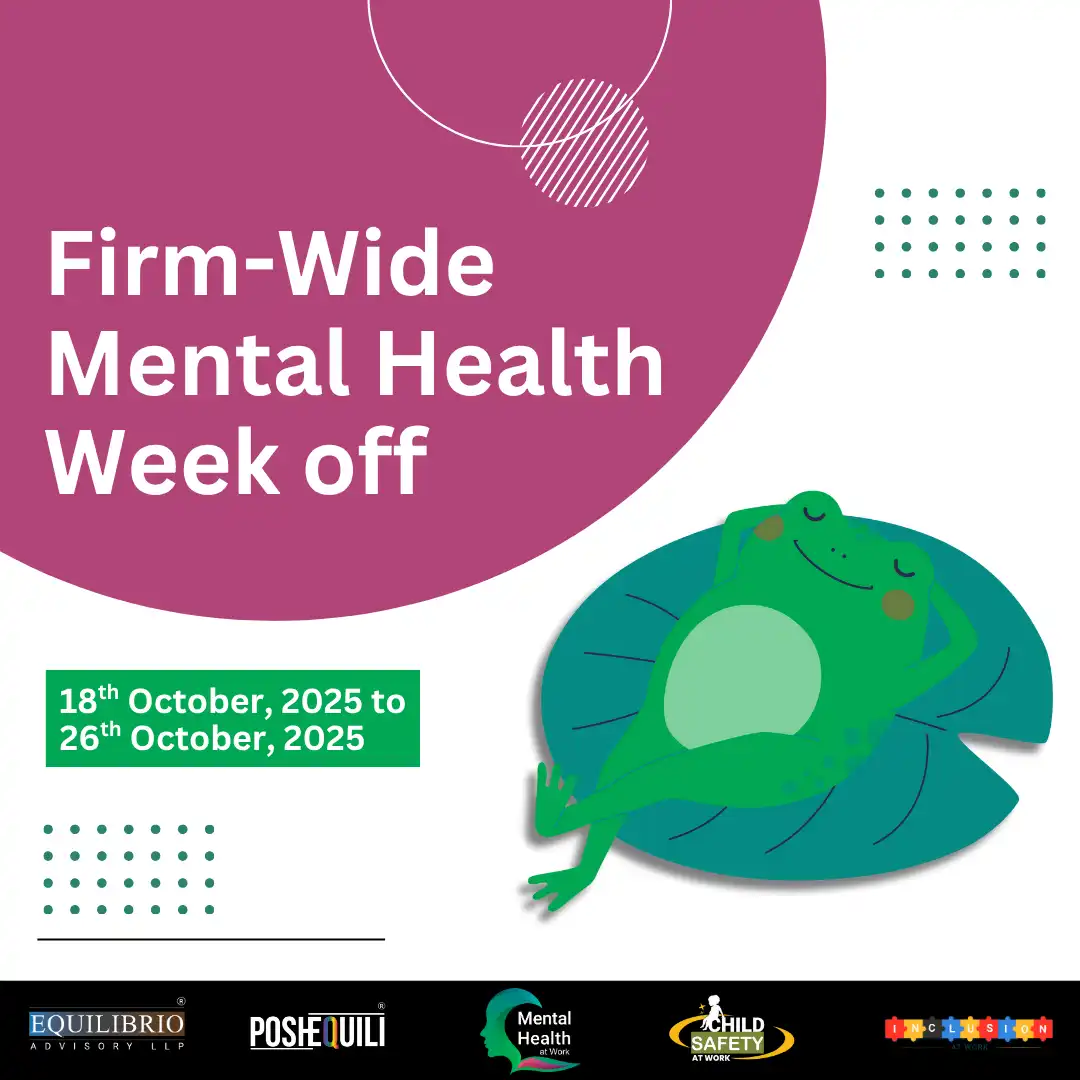CONSENT IN EVERYDAY LIFE
Consent is defined under section 375 of the Indian Penal Code as ‘an unequivocal voluntary agreement when the woman by words, gestures or any form of verbal or non-verbal communication, communicates willingness to participate in the specific sexual act’. Essentially, this definition contends that consent is a voluntary Agreement that is given by a woman within the context of a sexual act. Recently, #metoo spawned various conversations about this idea of sexual consent as understanding, and the extent of lack thereof, of such consent became apparent. Notably, the bulk of these conversations were restricted within the sphere of sexual context. However, the notion of consent is not restricted to sexual consent and can be applied to non-sexual situations too. While the society seems to be finally catching up to the idea of seeking consent in sexual interactions, with a longer way to go still, there is an equal amount of catching up to do when it comes to seeking consent in non-sexual interactions. Some of the principles behind seeking consent in sexual interactions – making the other person feel safe, secure, respected, ensuring that they are heard – are principles that can be extended in situations beyond the proverbial bedroom. Putting into practice the idea of consent in non-sexual spaces might not be as difficult as one might perceive it to be. In fact, it is something all of us practice daily. For example, it would be inappropriate for a person to borrow someone else’s car without their permission – since it is technically stealing – just as it would be inappropriate to peep into someone else’s phone without their permission.
The Cambridge dictionary defines consent as ‘permission or agreement’, ‘to agree to do something or allow someone to do something’. Consent, as per this definition, implies a positive affirmation for an act. This is in line with the departure of the idea of ‘no means no’ and the emergence of ‘yes means yes’, recently popularized in the year 2008 by feminist authors Jaclyn Friedman and Jessica Valenti through their anthology “Yes means yes!”. What this also implies is that a mere absence of a refusal does not constitute consent. Consent cannot exist without deliberate positive affirmation. Thus, valid consent begins with no assumption of the expected response but being prepared with receiving either a yes or a no to the request made. Often in our daily lives, we seem to miss this nuance while trying to navigate consent. For example, there is space for consent in ‘Hey are you coming to the movies?’ and less so in ‘Let us go to the movies’. Consent also includes an opportunity to withdraw consent after it is given or not giving consent to the same activity for which permission was sought and enthusiastically given in the past. Just because your friend let you borrow their car six months back does not necessarily mean you have free access to borrow their car today, without their permission.
In personal relationships, consent for non-sexual acts such as hugging, touching, or kissing can be sought to hold onto respect in the relationships. Extending this idea to other interpersonal relationships, planning a group activity must involve permission from all parties about their comfort about such activities. Prefacing conversations about sensitive issues with a question about whether the other person is comfortable talking about it gives them the necessary space to have or not have the conversation as per their own will. Within the workspace, once employees spend a significant amount of time with each other as colleagues, the lines between their personal-professional relationships tend to blur. In these situations, it would be healthier for colleagues to ask the other before sitting next to them, calling each other beyond working hours, or making physical contact of any kind.
Socio-cultural norms play a significant role in how consent or its absence may be expressed and how it may be perceived within the society. It can become difficult for an employee to refuse their manager’s request for a meeting at a time inconvenient for the employee due to the inherent power structure that exists within the manager-employee relationship. Thus, it may be helpful for the manager to ask the employee about their comfort with respect to the meeting, its time and location instead of ordering them to attend the meeting. The act of ‘asking’ would defy the inherent power structure in their relationship and also make possible space for the employee to consent to the meeting with terms that they may be comfortable with. This extends to other intricate social interactions too – such as the way we interact with children. Children are not beyond the scope of consent , a fact that is ignored by well-meaning adults who subject toddlers to overt physical contact in the form of cuddling, kissing, or even tickling. Children require healthy boundaries, a fact that should be considered before pushing them in situations that they might not be comfortable with. Seeking consent from children before they are hugged or cuddled paves the way of teaching them body autonomy. Consequently, children refusing to hug is a sign of claiming the autonomy and not an act of disrespect, disobedience or rebellion as often perceived. Indian pop-culture is specifically guilty of misunderstanding, misinterpreting, and miscommunicating the idea of consent. From Chumma in the 1990s to Main tera boyfriend in 2017 and many more, rarely while thumping our feet to the tunes of these songs do we realize how they internalize a deep rooted misogyny and exhibit the lack of awareness of consent within our society while woefully glorifying stalking and harassment.
Consent, in practice, contains two primary aspects. The first is the existence of consent itself and the second is its communication. A simple idea of consent is misperceived as complicated. This is mainly because we are not accustomed to inviting consent in our daily lives. Consent continues to be an ‘idea’, an ‘abstract concept’ or an ‘ideal thing to do’ because we are inadequate in engaging with it as a practice. “I did not know I had to ask” is a question that a lot of people have to tackle with because they did not invite consent at the first instance. The perception of consent gets more convoluted when its nuances vis-à-vis its communication are introduced. In a study conducted among 470 young single men in trying to determine causes for sexual aggression by Antonia Abbey, Angela J. Jacques-Tiura, and James M. LeBreton in the year 2012, it was found that misperception of sexual intent is one of the biggest predictors of sexual assault. The study throws light on how unusually high numbers of perpetrators of sexual assault misinterpreted and misunderstood obvious cues that resulted in grave trauma for the victims. While words like ‘no’, legal age to consent, intoxication are indisputable indicators for lack of consent, there are various subtle indicators in addition to the obvious signs that may indicate an absence of consent. These indicators vary with the settings and in relationships in which they are used. Further, sometimes body language is used instead of verbal communication to convey consent. Consent, thus, is heavily contextual and changes immensely with changes in context. It is important to remember in such a situation that existence of consent is solely determined by the person who gives such consent and not by the person who receives it. Consent is what is communicated and not what is heard. Thus, the test of valid consent lies within the consent itself and not in its communication. It is ideal to be conservative while determining consent in our day to day lives and actively use the method of affirmative consent to ensure its explicit existence.
It is argued by some that expectation of consent in ways as minute as these will make interactions with their loved ones mechanical and devoid of intimacy. On the contrary, however, the presence of consent in everyone’s day to day life will make the other person feel acknowledged, relationships respectful and the world safer and inclusive. Most of us practice consent in our daily lives to varying degrees already. All we must do is be mindful of the fact that we are already doing it and extend the practice to more aspects of our life. The more we do it, the more we will find out that people appreciate us for having considered their personal boundaries. In addition to enriching all sorts of inter-personal relationships, it also strips the idea of ‘Consent’ from being something that people specifically have to do while engaging in sexual relationships with people and normalizes it as something that they might do across situations out of discipline and respect.
– Vatsal Chorera – Legal & Compliance & Samriti Makkar Midha – Psychologist (Clinical) & Psychotherapist External Member & Trainer Head, Partner




